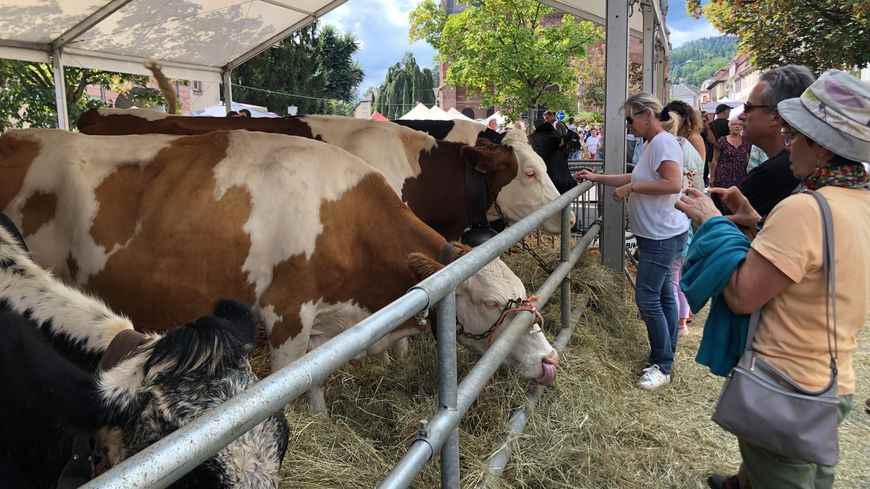The Vosges cows take up their winter quarters. This Sunday, Munster celebrated transhumance. From the summit of Gaschney, a herd followed by 400 hikers has rallied the valley and the town center for the traditional festival announcing the beginning of autumn. The transhumance and pie festival has attracted more than a thousand people for fifteen years.
At the foot of the Saint-Léger church was a farmer’s market, marcaire meals, folk dances, musical entertainment and the parade of cows. All of this in a decor intended to be faithful to tradition: farmers or not, the merchants at the stands have been instructed to wear the work clothes of the marcaires: leather cap, velvet pants and short-sleeved jacket.
– Francois Chagnaud
That’s how traditions stay alive
In uniform, the president of the history society of the valley of the city of Munster, Gérard Leser, salutes the dynamism of this celebration. “There is a craze, an outpouring of desire to find oneself in relation with this authentic tradition, obviously with the risk of folklorization, but that is part of the game. I do not regret it because traditions must evolve, it is very good”. Among these developments: the shrubs that come to decorate the cows during the parade. “It’s not native to the valley, it’s an import, probably Swiss, but it’s good. It contributes to the beauty of this celebration. I am for traditions to evolve in the right direction. Each generation goes reproduce what the previous ones did, but add something else. That’s how traditions stay alive”concludes the folklorist historian.
This Saturday, October 8, it will be Muhlbach’s turn to celebrate transhumance.

– Francois Chagnaud
A transhumance in advance
The heatwaves of summer dried out the high stubbles of the Vosges mountains, depriving the herds of fresh grass and thus leading the breeders to move their herds to the valley. “The quantity of milk was less important”, observes Nathalie, from the Heinrich farm in Stosswihr. Its herd includes 90 Vosges cows. “Per day we still had 200 liters less because they did not have enough grass to graze properly. The cheese yield will be a little lower since we have drier, poorer grass. We will have to feed them indoors and give them the winter ration now. It will inevitably impact us, especially this winter when we will have to buy fodder because we have not been able to produce the sufficient quantity of hay.”
